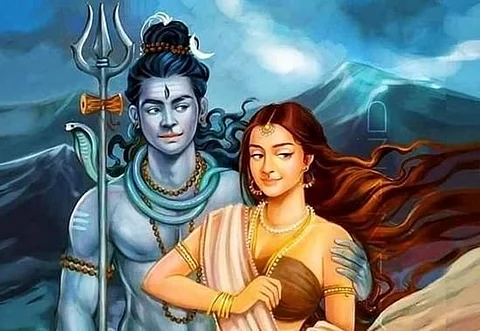

Maha Shivaratri is an important Hindu festival that is celebrated every year in honour of Lord Shiva, one of the three major deities of Hinduism. The festival is observed on the 14th night of the new moon during the month of Phalguna or Maagh, which falls between February and March in the Gregorian calendar.
Maha Shivaratri has a very divine place for the Hindus and has come with a heritage of great cultural importance in this segment we will explore every related detail around its history, importance and its evolution till today.
History and Significance of Maha Shivaratri:
The origin of Maha Shivaratri can be traced back to ancient Hindu mythology. According to legend, Lord Shiva and Goddess Parvati were married on this day. It is also believed that on this day, Lord Shiva performed the Tandava dance, which symbolizes the cycle of creation and destruction.
Maha Shivaratri is also associated with the Samudra Manthan or churning of the ocean, a significant event in Hindu mythology. As per the legend, the gods and demons were fighting for the nectar of immortality, and Lord Shiva came to their rescue by drinking the poison that emerged during the churning process. The poison turned his throat blue, and he was thus given the name "Neelkanth."
Maha Shivaratri holds great significance for Hindus, as it is believed to be a day when Lord Shiva bestows his blessings on his devotees. It is believed that fasting and praying to Lord Shiva on this day can bring good health, prosperity, and happiness.
Maha Shivaratri Celebrations:
Maha Shivaratri is celebrated in different ways across India, and the celebrations can vary based on local traditions and customs. Here are some of the most popular ways in which Maha Shivaratri is celebrated:
Rituals around Fasting: Fasting is a common practice during Maha Shivaratri, as it is believed to purify the body and mind. Devotees often observe a fast throughout the day and night, consuming only milk and fruits. Some people also abstain from water during the fast.
Visiting Temples: On Maha Shivaratri, people visit Shiva temples and offer milk, flowers, and bael leaves to the deity. They also perform puja and offer prayers to seek Lord Shiva's blessings. In some temples, special rituals are performed, such as bathing the Shiva Lingam with milk, honey, and water.
Night Vigil: Many people stay awake throughout the night on Maha Shivaratri and engage in bhajans, kirtans, and other devotional activities. It is believed that staying awake and praying throughout the night can bring good fortune and blessings.
Holi Bonfire: In some parts of India, Maha Shivaratri coincides with the festival of Holi. On this day, people light bonfires and perform aarti around it, seeking Lord Shiva's blessings.
Mahamrityunjaya Mantra: The Mahamrityunjaya Mantra, which is a powerful chant in honour of Lord Shiva, is recited throughout the day and night on Maha Shivaratri. The mantra is believed to have the power to ward off negative energies and bring peace and prosperity.
Special Food: On Maha Shivaratri, people prepare special dishes such as thandai, a drink made with milk, nuts, and spices, and sabudana khichdi, a dish made with tapioca pearls, potatoes, and peanuts. These dishes are consumed during the fast and are considered to be auspicious.